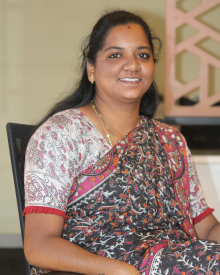Class 10 Science
English
Last updated
Wed, 30-Jul-2025
1.
differentiates materials, objects,
organisms, phenomena, and processes, based on, properties and characteristics,
such as, autotrophic and heterotrophic nutrition, biodegradable and
non-biodegradable substances, various types of reactions, strong and weak acids
and bases, acidic, basic, and neutral salts using different indicators, real
and virtual images, etc.
2.
classifies materials, objects, organisms,
phenomena, and processes, based on properties and characteristics, such as,
metals and non-metals, acid and bases on the basis of their physical and
chemical properties.
3.
plans and conducts investigations and
experiments to arrive at and verify the facts, principles, phenomena, or to
seek answers to queries on their own, such as, investigates conditions
necessary for rusting, tests the conductivity of various solutions, compares
the foaming capacity of different types of soap samples, verifies laws of
reflection and refraction of light, Ohm’s law, etc. Do variegated leaves
perform photosynthesis? Which gas is evolved during fermentation? Why does the
shoot of a plant move towards light?
4.
relates processes and phenomena with
causes and effects, such as, hormones with their functions, tooth decay with pH
of saliva, growth of plants with pH of the soil, survival of aquatic life with
pH of water, blue colour of sky with scattering of light, deflection of compass
needle due to magnetic effect of electric current, etc.
5.
explains processes and phenomena, such as,
nutrition in human beings and plants, transportation in plants and animals,
extraction of metals from ores, placement of elements in modern periodic table,
displacement of metals from their salt solutions on the basis of reactivity
series, working of electric motor and generator, twinkling of stars, advanced
sunrise and delayed sunset, formation of rainbow, etc.
6.
draws labelled diagrams, flow charts,
concept maps, and graphs, such as, digestive, respiratory, circulatory,
excretory, and reproductive systems, electrolysis of water, electron dot
structure of atoms and molecules, flowchart for extraction of metals from ores,
ray diagrams, magnetic field lines, etc.
7.
analyses and interprets data, graphs, and
figures, such as, melting and boiling points of substances to differentiate
between covalent and ionic compounds, pH of solutions to predict the nature of
substances, V-I graphs, ray diagrams, etc.
8.
calculates using the data given, such as,
number of atoms in reactants and products to balance a chemical equation,
resistance of a system of resistors, power of a lens, electric power, etc.
9.
uses scientific conventions to represent
units of various quantities, symbols, formulae, and equations, such as,
balanced chemical equation by using symbols and physical states of substances,
sign convention in optics, SI units, etc.
10.
handles tools and laboratory apparatus
properly; measures physical quantities using appropriate apparatus,
instruments, and devices, such as, pH of substances using pH paper, electric
current and potential difference using ammeter and voltmeter, etc.
11.
applies learning to hypothetical
situations, such as, what will happen if all herbivores are removed from an
ecosystem? What will happen if all non-renewable sources of energy are
exhausted?
12.
applies scientific concepts in daily life
and solving problems, such as, suggest precautions to prevent sexually
transmitted infections, uses appropriate electrical plugs (5/15A) for different
electrical devices, uses vegetative propagation to develop saplings in gardens,
performs exercise to keep in good health, avoids using appliances responsible
for ozone layer depletion, applies concept of decomposition reaction of baking
soda to make spongy cakes, etc.
13.
derives formulae, equations, and laws,
such as, equivalent resistance of resistors in series and parallel, etc.
14.
draws conclusion, such as, traits or
features are inherited through genes present on chromosomes, a new species
originates through evolutionary processes, water is made up of hydrogen and
oxygen, properties of elements vary periodically along the groups and periods
in periodic table, potential difference across a metal conductor is
proportional to the electric current flowing through it, etc.
15.
takes initiative to know about scientific
discoveries and inventions, such as, Mendel’s contribution in understanding the
concept of inheritance, Dobereiner for discovering triads of elements,
Mendeleev for the development of the periodic table of elements, Oersted’s
discovery that electricity and magnetism are related, discovery of relation
between potential difference across a metal conductor and the electric current
flowing through it by Ohm, etc.
16.
exhibits creativity in designing models
using eco-friendly resources, such as, working model of respiratory, digestive,
and excretory systems, soda acid fire extinguisher, periodic table, micelles
formation, formation of diamond, graphite, and Buckminsterfullerene, human eye,
electric motor and generator, etc.
17.
exhibits values of honesty, objectivity,
rational thinking, and freedom from myth and superstitious beliefs while taking
decisions, respect for life, etc., such as, reports and records experimental
data accurately, says no to consumption of alcohol and drugs, sensitises others
about its effect on physical and mental health, sensitises for blood and organ
donations, understands the consequences of pre-natal sex determination.
18.
communicates the findings and conclusions
effectively, such as, those derived from experiments, activities, and projects
orally and inwritten form using appropriate figures, tables, graphs, and
digital forms, etc.
19.
makes efforts to conserve environment
realising the inter- dependency and interrelationship in the biotic and abiotic
factors of environment, such as, appreciates and promotes segregation of
biodegradable and non-biodegradable wastes, minimises the use of plastics,
takes appropriate steps to promote sustainable management of resources in
day-today life, advocates use of fuels which produce less pollutants, uses
energy efficient electric devices, uses fossil fuels judiciously, etc.
